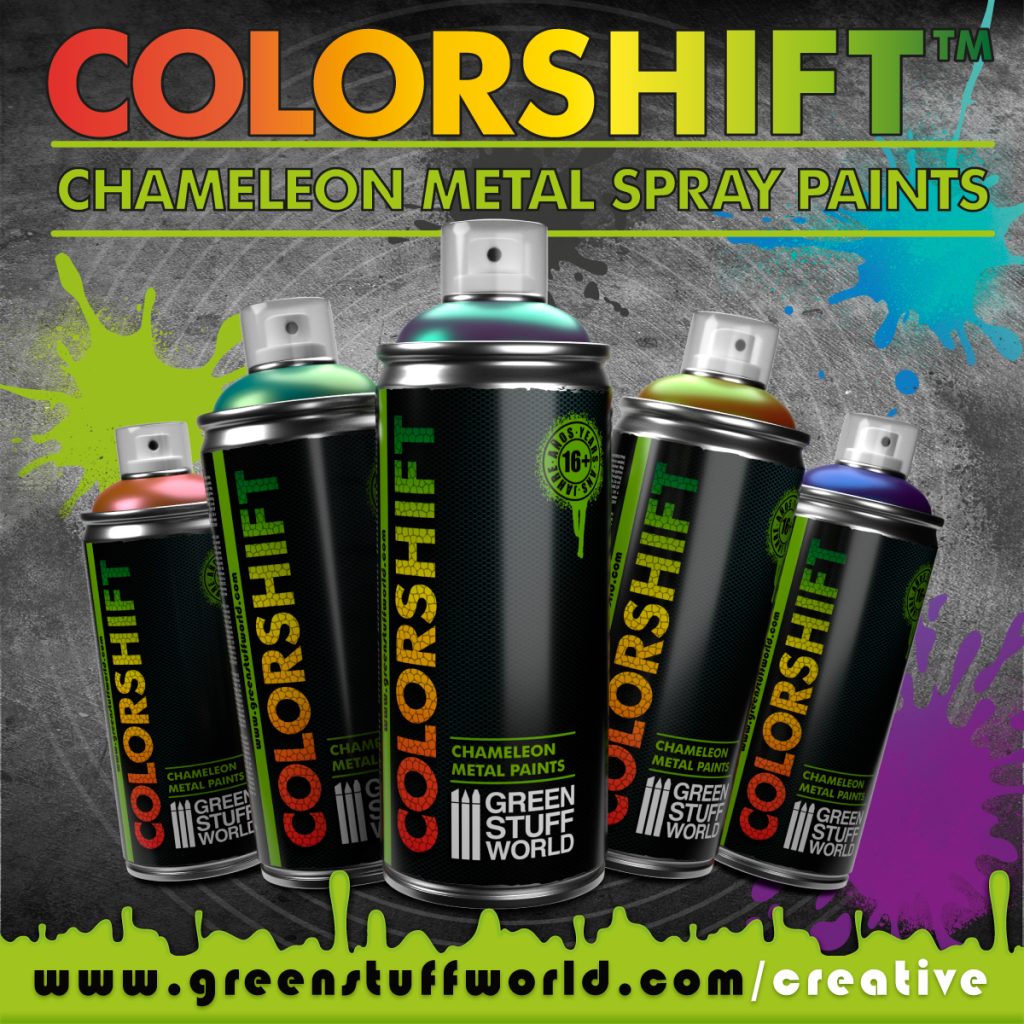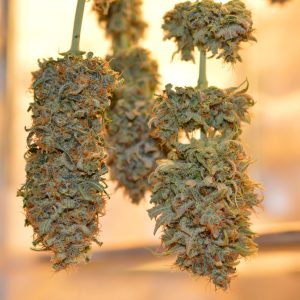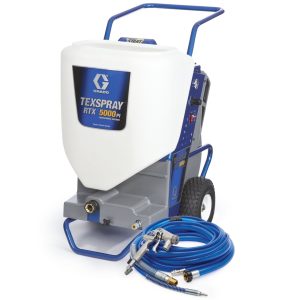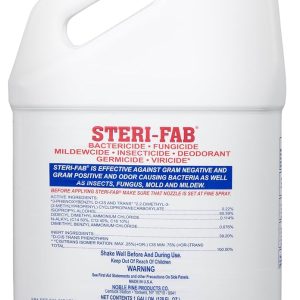
Transform Your Projects with Color Changing Spray Paint: The Ultimate Innovation
Meta Description: Discover how color changing spray paint revolutionizes DIY projects with thermochromic technology. Learn application techniques, best brands, and creative uses for amazing results.
The world of DIY projects and artistic expression has been revolutionized by one groundbreaking innovation: color changing spray paint. This remarkable coating technology transforms ordinary surfaces into dynamic, interactive displays that respond to environmental changes. Whether you’re a professional artist, automotive enthusiast, or weekend DIY warrior, understanding the science and application of color changing spray paint opens up endless creative possibilities that were once confined to science fiction.
What is Color Changing Spray Paint and How Does It Work?
Color changing spray paint represents a fusion of advanced chemistry and practical application, utilizing specialized pigments that react to external stimuli. The most common type employs thermochromic pigments, which alter their molecular structure in response to temperature fluctuations. When heat is applied, these microscopic crystals undergo a reversible phase transition, causing them to absorb and reflect different wavelengths of light, resulting in visible color changes.
The science behind this transformation involves liquid crystal technology similar to that found in mood rings and thermometers. The pigments are encapsulated in microscopic spheres suspended within the paint medium, ensuring durability and consistent performance. Temperature-sensitive color changing spray paint typically activates between 77°F and 86°F (25°C to 30°C), though specialized formulations can be calibrated for different activation temperatures.
Beyond thermochromic varieties, photochromic color changing spray paint responds to UV light exposure, shifting colors when moved between indoor and outdoor environments. This technology incorporates silver halide crystals or organic photochromic compounds that undergo molecular rearrangement when exposed to ultraviolet radiation. The result is a coating that appears one color indoors and transforms to another shade in sunlight.
Key Components of Color Changing Technology
The effectiveness of color changing spray paint depends on several critical components working in harmony:
- Thermochromic Pigments: Microscopic crystals that change structure with temperature
- Encapsulation Medium: Protective coating around pigments to prevent degradation
- Base Coating System: Traditional paint components including binders, solvents, and additives
- Stabilizers: Chemical compounds that maintain color-changing properties over time
- Carrier Agents: Ensure even distribution and proper adhesion to surfaces
Types of Color Changing Spray Paint Available
The market for color changing spray paint has expanded dramatically, offering various formulations designed for specific applications and effects. Understanding these different types helps ensure you select the right product for your project’s requirements and environmental conditions.
Thermochromic Color Changing Spray Paint
Thermochromic color changing spray paint remains the most popular choice for both amateur and professional applications. These formulations respond to body heat, ambient temperature changes, or applied heat sources. Popular color transitions include blue to pink, black to red, and purple to blue. The activation temperature can be customized during manufacturing, allowing for applications ranging from temperature-indicating safety equipment to interactive art installations.
Professional-grade thermochromic color changing spray paint offers superior durability and more dramatic color transitions. These formulations often include UV stabilizers and advanced binding agents that extend the coating’s lifespan and maintain color-changing properties through thousands of cycles. The temperature range for activation can be precisely controlled, making them suitable for industrial applications where specific temperature monitoring is required.
Photochromic UV-Activated Paint
Photochromic color changing spray paint provides a different type of transformation, responding to ultraviolet light exposure rather than temperature changes. These coatings appear one color indoors and shift to vibrant, often fluorescent colors when exposed to sunlight. The transformation is typically rapid, occurring within seconds of UV exposure, and reverses quickly when moved to indoor lighting conditions.
This type of color changing spray paint is particularly popular for automotive applications, where the dramatic color shift creates stunning visual effects as vehicles move between shaded and sunny areas. The photochromic compounds used in these formulations are highly stable and can withstand repeated UV exposure without degrading, though proper surface preparation and primer application remain crucial for optimal performance.
Hydrochromic Water-Activated Paint
A newer innovation in the color changing spray paint market involves hydrochromic technology that responds to moisture or water contact. These specialized coatings change color when wet and return to their original appearance as they dry. Applications include decorative elements for outdoor spaces, children’s toys, and novelty items where water interaction creates engaging visual effects.
Hydrochromic color changing spray paint requires careful application and often needs multiple light coats to achieve optimal color-changing performance. The substrate preparation is particularly important, as any residual moisture or oils can interfere with the coating’s ability to respond properly to water contact.
Application Techniques for Professional Results
Achieving professional-quality results with color changing spray paint requires understanding both traditional spray painting techniques and the unique considerations these specialized coatings demand. Proper surface preparation, environmental control, and application methodology are crucial for ensuring the color-changing properties function correctly and maintain their effectiveness over time.
Surface Preparation and Priming
The foundation of any successful color changing spray paint application begins with meticulous surface preparation. Unlike conventional paints, color-changing formulations are more sensitive to surface contaminants, texture variations, and underlying color influences. Start by thoroughly cleaning the surface with a degreasing agent to remove oils, fingerprints, and environmental contaminants that could interfere with adhesion or color-changing performance.
Sanding requirements vary depending on the substrate material and existing finish. For metal surfaces, begin with 320-grit sandpaper to remove any rust, corrosion, or existing paint that might affect the final appearance. Progress to 600-grit paper for final smoothing, ensuring a uniform surface texture that promotes even color changing spray paint application. Plastic and composite materials may require special adhesion promoters or primers designed specifically for these substrates.
Primer selection plays a critical role in color changing spray paint performance. White or light-colored primers provide the best foundation for dramatic color transitions, as they don’t interfere with the chromatic compounds’ ability to reflect different wavelengths of light. Specialty primers designed for color-changing applications often include reflective particles that enhance the visual impact of the transformation effect.
Environmental Conditions and Timing
Environmental factors significantly impact color changing spray paint application success. Temperature, humidity, and air circulation must be carefully controlled to ensure proper atomization, adhesion, and curing. Ideal application conditions include temperatures between 65°F and 75°F (18°C to 24°C) with relative humidity below 50%. Higher humidity can cause solvent flash-off issues, while excessive heat may prematurely activate thermochromic pigments during application.
Wind and air movement require special consideration when applying color changing spray paint. While some air circulation helps with solvent evaporation, excessive airflow can cause overspray issues and uneven coating thickness. Indoor application environments should maintain gentle air circulation without direct drafts across the work surface.
Timing considerations extend beyond immediate application conditions. Color changing spray paint often requires extended curing times compared to conventional coatings, sometimes needing 24 to 48 hours before the color-changing properties fully activate. Plan project timelines accordingly, allowing adequate curing time before testing or exposing the finished surface to conditions that would trigger color changes.
Multi-Coat Application Strategy
Professional color changing spray paint application typically involves multiple thin coats rather than single heavy applications. This technique ensures even distribution of the color-changing pigments and prevents runs, sags, or texture issues that could compromise the final appearance. Begin with a light tack coat applied at 50% overlap, focusing on achieving complete coverage rather than full opacity.
Subsequent coats should be applied in opposing directions to ensure complete coverage and uniform pigment distribution. Allow proper flash time between coats as specified by the manufacturer, typically 5 to 15 minutes depending on environmental conditions and specific product formulation. The final coat should be applied with slightly more material to achieve full opacity and optimal color-changing performance.
Inter-coat adhesion is particularly important with color changing spray paint because the specialized pigments can interfere with chemical bonding between layers if not properly managed. Some products require light sanding between coats with very fine abrasives (800-1000 grit) to ensure mechanical adhesion, while others rely entirely on chemical bonding within specified recoat windows.
Creative Applications and Project Ideas
The versatility of color changing spray paint extends far beyond simple decorative applications, opening up possibilities for functional, artistic, and commercial uses that leverage the dynamic nature of these specialized coatings. Understanding various application possibilities helps maximize the creative potential of these innovative products while ensuring appropriate selection for specific project requirements.
Automotive Customization Projects
Automotive applications represent one of the most popular uses for color changing spray paint, where the dramatic visual transformation creates stunning effects as vehicles encounter different environmental conditions. Professional automotive painters often incorporate thermochromic elements into custom paint jobs, creating surfaces that shift color with engine heat, ambient temperature changes, or even body heat from passengers and drivers.
Hood and engine bay applications showcase color changing spray paint particularly effectively, as engine heat creates dynamic color zones that shift and move as the vehicle operates. Racing stripes, accent panels, and trim elements treated with temperature-activated formulations provide subtle yet dramatic visual effects that change throughout the driving experience. The key to successful automotive application lies in proper surface preparation and the use of automotive-grade clear coats that protect the color-changing pigments from UV degradation and physical damage.
Custom motorcycle applications often feature color changing spray paint on exhaust components, engine cases, and decorative elements where heat from the engine creates constantly shifting color patterns. These applications require high-temperature formulations specifically designed to maintain their color-changing properties under extreme heat conditions while providing adequate protection against corrosion and wear.
Architectural and Interior Design Elements
Architectural applications of color changing spray paint are increasingly popular in commercial and residential design projects where dynamic surfaces create engaging environmental experiences. Wall features, decorative panels, and architectural elements treated with photochromic formulations transform throughout the day as natural lighting conditions change, creating spaces that feel alive and responsive to their environment.
Interior designers incorporate color changing spray paint into feature walls, art installations, and decorative objects that respond to room temperature variations or lighting changes. Restaurant and hospitality environments particularly benefit from these applications, where the color-changing elements create conversation pieces and memorable visual experiences for guests. The key is selecting formulations with activation temperatures appropriate for normal interior conditions while ensuring the color transitions complement the overall design aesthetic.
Retail environments utilize color changing spray paint for display elements, signage, and promotional materials that capture attention through their dynamic nature. Window displays featuring temperature-activated elements create engaging street-side attractions that draw customers into stores, while photochromic applications provide different visual experiences between daytime window shopping and evening interior browsing.
Artistic and Craft Applications
Artists and crafters have enthusiastically adopted color changing spray paint for creating interactive artworks that engage viewers in unique ways. Sculptural installations incorporating thermochromic elements respond to viewer proximity and touch, creating participatory art experiences that blur the line between observer and participant. These applications often combine traditional artistic techniques with cutting-edge material science to produce works that exist at the intersection of art and technology.
Canvas paintings enhanced with color changing spray paint elements create artworks that transform based on environmental conditions or viewer interaction. Mixed-media pieces might feature backgrounds that shift color with temperature while maintaining static elements painted with conventional materials. This approach allows artists to create temporal dimensions in their work, where the piece appears different at various times of day or in different seasons.
Craft applications range from decorative objects and home accessories to children’s toys and educational materials. Color changing spray paint applied to temperature-sensitive educational models helps students visualize heat transfer, thermal dynamics, and other scientific concepts through direct observation. Hobby projects like custom gaming accessories, phone cases, and decorative items benefit from the engagement factor these coatings provide.
Top Brands and Product Recommendations
The color changing spray paint market features several manufacturers offering products with varying quality levels, color options, and specialized formulations. Understanding the strengths and characteristics of leading brands helps ensure you select products appropriate for your specific application requirements and performance expectations.
Premium Professional-Grade Options
Rust-Oleum Specialty Color Change represents one of the most widely available professional-grade color changing spray paint options, offering reliable thermochromic performance with good durability characteristics. Their formulation provides smooth application properties and consistent color transitions, making it suitable for both amateur and professional applications. The activation temperature is calibrated for optimal performance in typical ambient conditions, and the color selection includes popular combinations like purple-to-pink and blue-to-purple.
Plasti Dip Color Change offers a unique removable approach to color changing spray paint, allowing users to experiment with thermochromic effects while maintaining the ability to remove the coating if desired. This product line is particularly popular for automotive applications where temporary customization is preferred, and the rubberized finish provides additional protection against minor impacts and scratches.
Professional painters often prefer SprayMax Color Change products for their superior atomization characteristics and extended working time. These formulations include advanced UV stabilizers and binding agents that maintain color-changing properties through extended exposure cycles, making them suitable for outdoor applications and high-use environments.
Specialty Formulations for Specific Applications
Heat Sensitive Paint Company produces specialized color changing spray paint formulations with precisely controlled activation temperatures, ranging from low-temperature varieties that activate at 60°F (15°C) to high-temperature versions requiring 120°F (49°C) or higher. These products are often used in industrial applications where specific temperature monitoring is required, though they’re also popular for artistic applications requiring particular activation characteristics.
Photochromic Technologies Inc. focuses exclusively on UV-activated color changing spray paint formulations, offering the most dramatic color transitions available in the photochromic category. Their products shift from nearly transparent or white to vivid fluorescent colors when exposed to sunlight, creating stunning visual effects for both artistic and commercial applications.
Budget-Friendly Options for Beginners
Entry-level color changing spray paint options provide an affordable way to experiment with this technology while learning proper application techniques. Krylon Color Maximizer offers basic thermochromic functionality at a reasonable price point, though with less dramatic color transitions and shorter lifespan compared to premium products. These formulations work well for craft projects, temporary decorations, and applications where budget constraints are primary considerations.
Dupli-Color Specialty Effects provides another budget-conscious option with decent performance characteristics for non-critical applications. While the color-changing effects may not be as pronounced or durable as premium alternatives, these products offer good value for hobbyists and DIY enthusiasts looking to explore the possibilities of color changing spray paint without significant investment.
Comparison Table: Leading Color Changing Spray Paint Brands
| Brand | Price Range | Activation Type | Durability | Best Applications |
|---|---|---|---|---|
| Rust-Oleum Specialty | $15-25 | Thermochromic | High | Automotive, Crafts |
| Plasti Dip Color | $18-30 | Thermochromic | Medium | Removable Auto |
| SprayMax Professional | $25-35 | Thermochromic | Very High | Commercial Use |
| Heat Sensitive Paint Co. | $30-50 | Custom Temp | Very High | Industrial/Artistic |
| Photochromic Tech Inc. | $40-60 | UV-Activated | High | Outdoor Applications |
| Krylon Color Max | $8-15 | Thermochromic | Low-Medium | Hobby Projects |
Troubleshooting Common Issues
Working with color changing spray paint presents unique challenges that differ from conventional coating applications. Understanding common problems and their solutions helps ensure successful project outcomes while avoiding costly mistakes that could compromise the color-changing functionality or overall appearance.
Color Transition Problems
Weak or inconsistent color transitions represent the most frequent issue encountered with color changing spray paint applications. This problem typically stems from insufficient coating thickness, contaminated surfaces, or interference from underlying colors. When the color change appears faded or incomplete, the solution often involves applying additional light coats of the color-changing material, ensuring each layer has adequate pigment density to produce the desired visual effect.
Environmental contamination during application can significantly impact color changing spray paint performance. Oil residues, moisture, or chemical contaminants on the surface create barriers that prevent proper adhesion and interfere with the pigments’ ability to function correctly. If color transitions appear blotchy or irregular, strip the coating and restart with thorough surface decontamination using appropriate solvents and cleaning agents.
Temperature interference during application can cause premature activation of thermochromic color changing spray paint, resulting in uneven color distribution or permanent color shifts. If the coating appears to have changed color during application, allow it to return to room temperature and assess whether the color-changing function still operates normally. In severe cases, complete removal and reapplication may be necessary.
Adhesion and Durability Issues
Poor adhesion problems with color changing spray paint often result from inadequate surface preparation or incompatible primer selection. When the coating begins peeling, chipping, or flaking shortly after application, examine the substrate preparation process and primer compatibility. Many color-changing formulations require specific primer types that provide chemical compatibility with the specialized pigments while ensuring mechanical adhesion to the substrate.
Environmental exposure can accelerate degradation of color changing spray paint, particularly formulations not designed for outdoor use. UV radiation, temperature cycling, and moisture exposure can break down the color-changing pigments or damage the binding matrix that holds them in suspension. For outdoor applications, ensure you’re using formulations specifically designed for environmental exposure and consider protective clear coat applications where appropriate.
Mechanical damage to color changing spray paint surfaces requires careful repair techniques to maintain color-changing functionality. Simple touch-up applications often create visible boundaries where the repaired area doesn’t match the surrounding coating’s color-changing behavior. For best results, sand and feather the damaged area, apply primer if necessary, and rebuild the color-changing coating in thin layers that blend with the existing surface.
Application and Finish Quality Issues
Texture problems in color changing spray paint applications typically result from incorrect spray technique, environmental conditions, or product-specific characteristics. Orange peel texture, runs, or sags require careful attention to application distance, material flow rate, and environmental conditions. Unlike conventional paints, color-changing formulations may have different rheological properties that affect spray pattern and leveling characteristics.
Overspray and contamination issues are particularly problematic with color changing spray paint because the specialized pigments can be expensive and difficult to remove from unintended surfaces. Proper masking and containment are essential, and any overspray should be removed immediately using appropriate solvents before the coating cures. Cured overspray may require mechanical removal methods that could damage surrounding surfaces.
Color matching challenges arise when color changing spray paint needs to blend with existing surfaces or when repairs are required. The dynamic nature of these coatings makes traditional color matching techniques inadequate, as the coating must match in both its base state and activated state. Test panels are essential for achieving acceptable color matches, and documentation of environmental conditions during color evaluation helps ensure consistency.
Maintenance and Longevity Tips
Proper maintenance of surfaces treated with color changing spray paint requires understanding the unique characteristics of these specialized coatings and implementing care procedures that preserve both their appearance and functionality. Unlike conventional paints, color-changing formulations contain sensitive components that can be damaged by improper cleaning methods or exposure to incompatible chemicals.
Cleaning and Care Procedures
Routine cleaning of color changing spray paint surfaces requires gentle approaches that avoid damaging the thermochromic or photochromic pigments. Use mild soap solutions with soft cloths or sponges, avoiding abrasive cleaners or scrubbing actions that could wear away the coating or damage the encapsulated pigments. Harsh chemicals, including many commercial cleaners, can permanently damage color-changing properties, so always test cleaning products on inconspicuous areas before general application.
For automotive applications, color changing spray paint surfaces benefit from regular washing with pH-neutral car wash soaps followed by thorough rinsing. Avoid automatic car washes with harsh brushes or high-pressure spray systems that could physically damage the coating. Hand washing with microfiber cloths provides the gentlest cleaning action while effectively removing dirt and contaminants that could interfere with color-changing performance.
Protective waxing and sealing of color changing spray paint surfaces requires careful product selection to ensure compatibility with the underlying coating. Traditional car waxes may contain solvents or other chemicals that interact negatively with color-changing pigments. Specialty protective products designed for color-changing applications provide UV protection and easy cleaning while maintaining the coating’s responsive properties.
Environmental Protection Strategies
UV protection represents one of the most critical factors in maintaining color changing spray paint longevity, particularly for outdoor applications. Even UV-activated photochromic formulations can suffer degradation from excessive sun exposure over time. Consider installing awnings, covers, or other protective measures for permanently installed applications, or plan for periodic recoating as part of regular maintenance schedules.
Temperature cycling protection helps preserve thermochromic color changing spray paint functionality over extended periods. Extreme temperature variations can stress the molecular structure of color-changing pigments, potentially reducing their responsiveness or shifting their activation temperatures. For critical applications, consider environmental controls or protective measures that moderate temperature fluctuations.
Moisture protection is particularly important for color changing spray paint applications in humid or wet environments. While many formulations include moisture resistance, prolonged exposure to high humidity or direct water contact can gradually degrade the coating matrix or affect pigment encapsulation. Ensure adequate drainage and ventilation in areas where color-changing coatings are applied, and address any water infiltration issues promptly.
Performance Monitoring and Touch-Up Procedures
Regular performance assessment of color changing spray paint helps identify developing issues before they become major problems. Document the coating’s color-changing behavior under various conditions when first applied, creating a baseline for future comparison. Monitor activation temperatures, color intensity, and transition speed over time, noting any changes that might indicate degradation or environmental damage.
Touch-up procedures for color changing spray paint require special techniques to blend new material with aged coating. The color-changing properties of new paint may not exactly match weathered surfaces, creating visible repair boundaries. Small repairs often require feathering techniques that gradually blend new material over larger areas, while major damage may necessitate complete recoating of entire panels or sections.
Professional assessment and maintenance planning for critical color changing spray paint applications should include regular inspections by qualified personnel familiar with these specialized coatings. Commercial and architectural applications may benefit from maintenance contracts that include periodic cleaning, protective treatments, and scheduled recoating based on performance monitoring and environmental exposure levels.
Ready to transform your next project with the amazing technology of color changing spray paint? Whether you’re planning an automotive customization, artistic installation, or unique DIY project, selecting the right design master spray paint products and application techniques will ensure stunning results that captivate and inspire. Start your color-changing journey today and discover the endless creative possibilities these innovative coatings provide.
Sources:
- Color Changing Spray Paint Technology Research
- Thermochromic Materials Science Journal
- Professional Paint Application Guidelines





